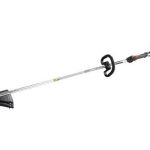
The heat of the summer can wreak havoc on your lawn. Not keeping a close eye on its needs could prove disastrous. (photo courtesy of Creative Commons)
If spring lawn care is about getting your lawn healthy and green, summer lawn care is about keeping it healthy, while temperatures soar and rainfall becomes a fleeting memory. It’s also about maintaining a lawn that can withstand all the barbecues, games, parties, and running feet that summer typically involves. Here are some tips for keeping your lawn in shape over those long, hot days of summer.
Preparing for the summer onslaught
Summer can create quite a punishing impact on your lawn. The heat, drought and outdoor activities wreak havoc with the lawn. Nevertheless, summer is the time when we nurture our lawns with water, fertilizer and constant mowing, so it looks green and lush despite the soaring temperatures.
Summer precautions
The main difference between mowing in summer and spring other than the weather is it is less frequent. Since the moisture is less in summer than in spring, the grass growth is less. The increased temperatures lead to faster evaporation of moisture. The best thing to do at summer is increase moisture retention. This can be done by different ways.
- Adjust mower settings to cut fewer grass. Three to four inches is a nominal height setting for the common types of grasses. For grass varieties like Zoysia, Bermuda and other grasses that grow in warm climates, the height can be reduced even shorter.
- Use a yardstick to measure the grass in different places like shaded and non-shaded areas, areas that receive southern exposures and northern exposure etc.
- Longer grasses give more shade, reducing evaporation of moisture. The shading also discourages germination of weed seeds.
- Mowing height differs for different grass types, so ensure you use the right height for your lawn.

Knowing when and when not to irrigate your lawn in the hot summertime will not only save you, but save your lawn from stressing out. (photo courtesy of Creative Commons)
Temperature difference
When you understand the changes brought about by the seasons on grass, you can implement the right care and keep your lawn well maintained and attractive. For grasses that survive well in cool season such as bluegrass, rye and fescue, the temperature should be around 60 degrees Fahrenheit. For grasses that favor warm season such as Bermuda, Centipede, Zoysia and St. Augustine the temperature should be near 70 degrees for optimal growth.
When the temperature soars to 80 degrees or more the cool season varieties start to struggle. The growth will be slow. Color looks faded and the lawn will start showing wear and tear signs due to the reduced capability to recover from the traffic and stress. Some of the grasses that favor cool season even go into dormant mode in summer and perk up only during early fall.
Watering tips
One inch minimum water is required by lawns generally and more during intense heat. You can keep a small can (straight sided) or rain gauge to track the water received by irrigation and rainfall. Water the grass less frequently and deeply, so the roots become drought tolerant. Watering early before it becomes too hot will reduce fungal growth and evaporation rate.
You should either water deeply and regularly or refrain from watering. When you let the lawn go dormant and brown and then revive it with water, it will not work. If the lawn becomes dormant, let it stay undisturbed until fall, when it will recover by itself.
Resources:
https://extension.illinois.edu/hortihints/0106b.html
Flickr Creative Commons (Photos)






